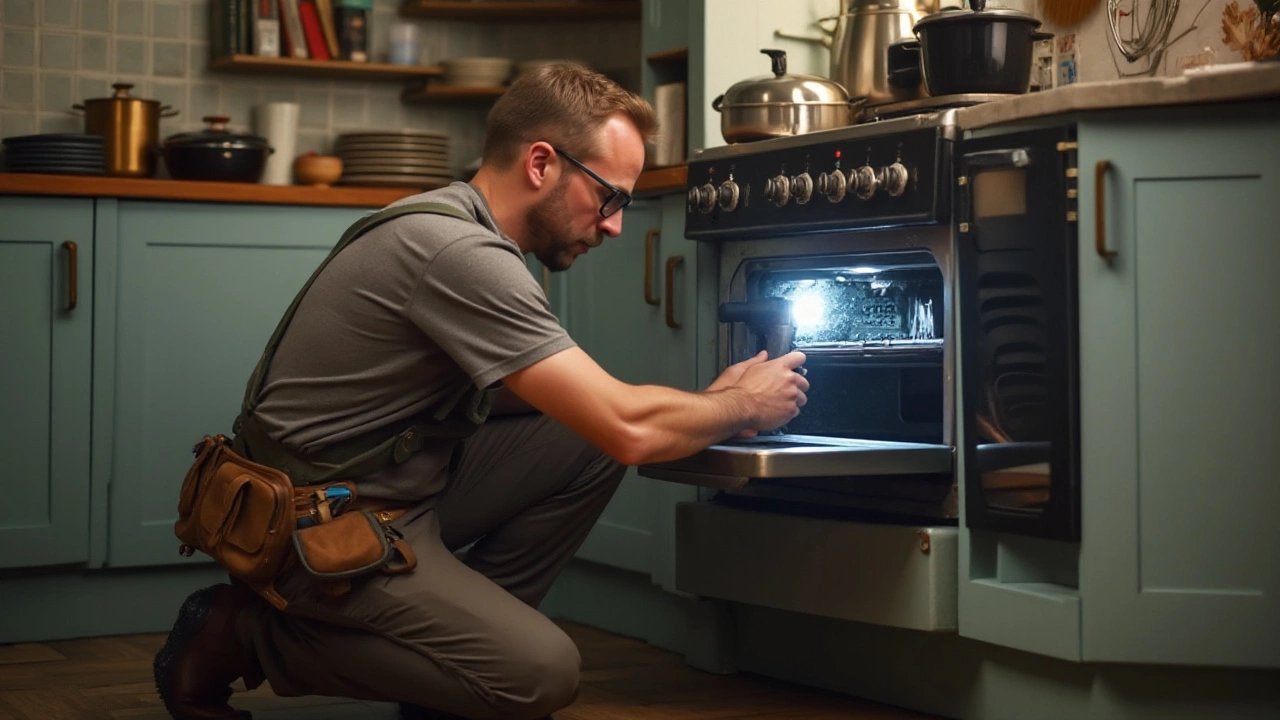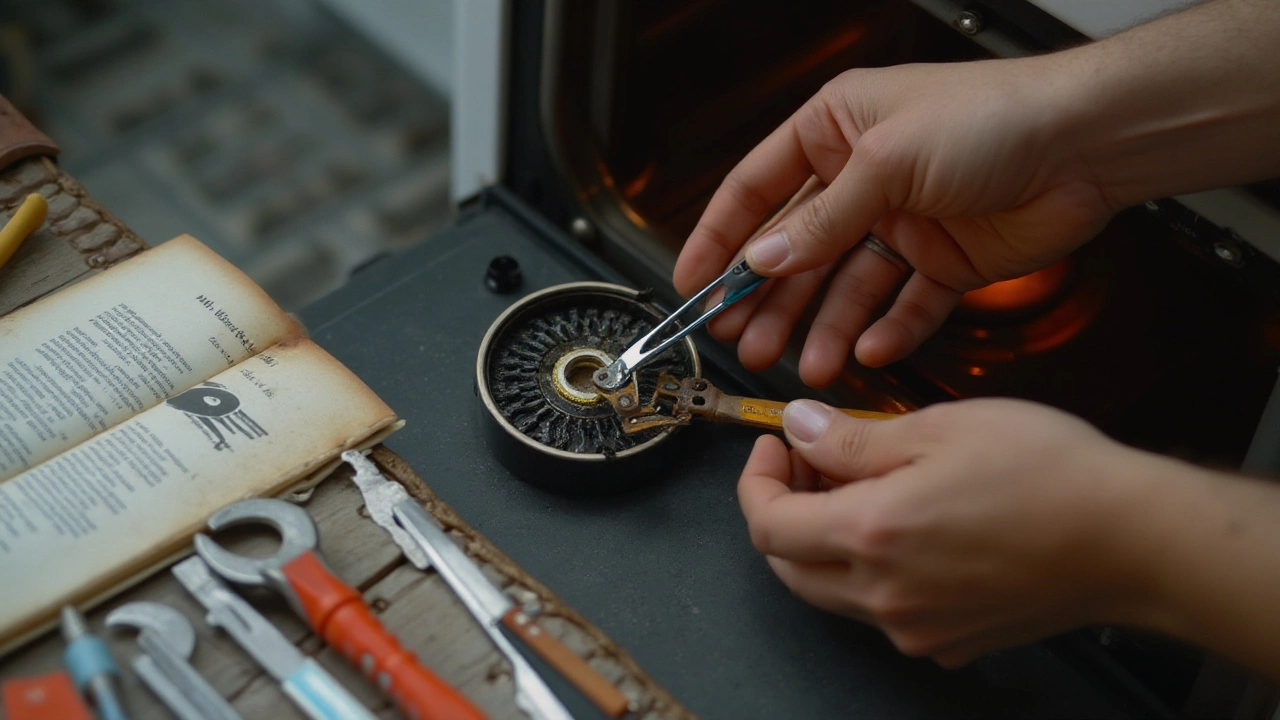When your trusted oven hits the ten-year mark, it is natural to wonder whether it is time to replace it or stick with some repairs. Kitchen appliances are like old friends — reliable, full of stories, but sometimes a bit sluggish with age. We all love the idea of simply sprucing things up instead of splurging on something brand new. But when it comes to an oven, the decision demands a bit more thoughtfulness.
Journey with us as we weigh the worth of fixing an aging oven. You'll find useful insights about repair expenses, how newer models might slash your energy bills, and some basic maintenance tips that might add a few more years to your oven's life. We’ll help you navigate through the whimsy of repair or replacement, bringing clarity to your culinary future.
- Evaluating Repair Costs vs. Replacement
- Energy Efficiency and Technological Advances
- DIY Fixes to Extend Life
- Professional Assessment and Upgrading Options
Evaluating Repair Costs vs. Replacement
When your oven repair project gets priced out, you might find yourself staring at figures that feel a bit like mystery math. The decision to repair or replace isn’t always black and white. Rather, it's a juggling act between repair costs, your appliance's age, and even sentimentality. A repair could cost less upfront but might not be the best long-term investment. Typically, a ten-year-old oven approaching the high end of repair expenses — say, more than half the price of a new model — is nudging you toward replacement.
Take a moment to ponder: What is the nature of the breakdown? Simple issues like a faulty thermostat or a broken timer might only set you back a small fee for part replacement. However, if the element is gone, or you have electronic control failures, costs can soar. Sometimes, those fees leave you wondering if you're just throwing good money after bad.
"It's not just about the price; it's about seeing that your investment adds value. Sometimes a replacement provides that assurance," says appliance expert Hayden Taylor.
Here’s a fun fact for the numbers lover: According to Consumer Reports, major appliances, ovens included, have an average lifespan of 15 years. So, if your oven is nearing the decade mark, witnessed frequent fixes, and those repair bills are stacking up, it’s likely wise to consider investing in a new unit. Opt for models promising better energy efficiency — they are often designed with modern features that could save you money over the span of their life.
Appliance maintenance might have prolonged its life, yet as the appliance ages, this often becomes an uphill battle against wear and tear. Resetting circuit boards and changing minor components may suffice for some, but larger expense repairs question that game plan. If faced with a pricy part replacement, like heating elements or control panels, explore model alternatives. Sometimes, a look at contemporary pricing could tip the scales toward installing a fresh unit.
A ten-year-old oven holds a charm, surely, especially if it has served you well through family gatherings and baking adventures. But when it’s consistently haggling for your attention and maintenance slips into unreliability, don't be afraid. Appliance technology progresses, offering intuitive, efficient ovens that might just surprise you in all good ways. So, tally up those repair expenses, seek professional opinions if necessary, and keep an ear out for your oven's gentle sighs — they might just be hinting at retirement.

Energy Efficiency and Technological Advances
As technology races forward, even humble kitchen appliances like ovens bask in the spotlight of innovation. When considering whether to repair a ten-year-old oven, it's crucial to weigh the benefits of modern, energy-efficient alternatives. Modern ovens often come equipped with features like convection cooking, which uses fans to circulate hot air and drop cooking times by as much as 25%. This not only saves time but cuts down on the energy required to perfect your favorite dishes, translating into noticeable savings on utility bills over time.
Todays ovens are smart identity bearers in the kitchen with sensors that adjust cooking duration and temperature with precision. Notably, newer models are often designed with enhanced insulation, thus requiring less energy to maintain consistent heat levels. This traces a sharp contrast to older models that might let precious heat escape, prompting them to work harder and longer to achieve the same results. In the last decade, ENERGY STAR-rated ovens are big triumphs, reportedly consuming around 20% less energy than non-rated counterparts.
According to the U.S. Department of Energy, “Upgrading to an ENERGY STAR-certified oven can save an average household over $50 annually just in energy costs.”
Then there's the wondrous world of induction technology, which efficiently uses electromagnetic fields to directly heat cookware. This up-and-coming star is reshaping the kitchen landscape, offering not only speed and precision but safety and ease of cleaning as well. When stacked against traditional electric or gas ovens, induction models escape the inefficiencies of heat transfer by skipping the intervening step of heating an element. They’re not only kinder to the planet but are heralded as ultra-safe, as the cooktop itself stays cool to touch — a boon for busy family kitchens.
For the eco-conscious or tech enthusiast weighing their repair-versus-replace decision, the leap in technology can be compelling. It's wise to balance this with the understanding of their energy efficiency gains. While the specs of a cutting-edge oven might best older models by leaps and bounds, the investment might also be significant, which gives pause for pragmatic evaluation. If the anticipated reduction in energy costs aligns with your financial and environmental priorities, then embracing this wave of advances can indeed be tempting. Perhaps, it’s time to add some future flair to your food craft space and set the stage anew for culinary creations with a savvy, splendid new oven design.

DIY Fixes to Extend Life
Are you dealing with a ten-year-old oven that's just a bit cranky but still dear to you? You're certainly not alone. Many households have cherished appliances they've relied on for years, and with the right approach, you can keep them going for a while longer. One of the simplest DIY tasks you can start with involves a thorough cleaning inside and out. Built-up grime can affect the oven's performance, leading to uneven cooking and inefficiencies. An effective cleaning not only boosts performance but might also reveal underlying issues that a bit of TLC can resolve right at home.
Start by clearing out any leftover food particles and grease that’s accumulated over the years. This step involves taking out the racks and scrubbing them with soapy water. For the interior, a mixture of baking soda and water spread as a paste can work wonders overnight. Once you've cleaned things up, ensure that the door seal is in good shape. A worn-out seal could be leaking heat and pushing those energy bills higher than necessary. If the seal seems brittle or cracked, you can replace it easily with a new one purchased from an appliance store.
Another intervention involves the oven's energy efficiency. Old ovens might have unavoidable flare-ups in energy guzzling, but make sure your compromises aren't too big. Swap out the oven bulb if it’s flickering or dim. Not only will you improve visibility while cooking, but it might slightly aid energy consumption by keeping things illuminated well. Take a look at the burners if it’s a gas oven; clean out any debris and inspect for a consistent flame. This minor activity doesn't require any advanced skills but could dramatically change how your oven breathes life back into your recipes.
As appliance expert Shannon Cowan highlights, "A well-maintained oven can turn inefficiencies into perfect culinary results with just a sprinkle of attention and a pinch of good upkeep."
Joining the dots, these simple steps aren't just about aesthetic pleasure. They’re a significant part of ensuring your oven doesn't give out on you when you need it most. If you venture into DIY with an adventurous spirit, replacing simple parts like the thermostat might also be on the cards, especially if you've noticed fluctuating temperatures during baking. For those willing to get their hands a bit more dirty, these fixes empower you to hold onto that trusty oven without rushing into the consumer race for newer models. Consider it a small investment of your time that pays back with myriad culinary moments.

Professional Assessment and Upgrading Options
As the years pass and your ten-year-old oven starts showing signs of wear, contemplating a professional assessment might be the best course of action. Think of this process as a health check-up for your kitchen cornerstone, akin to bringing in an expert to examine its performance and safety. A certified technician can provide more than just a cursory glance at your appliance. They dive deep into the mechanics, checking the heating elements, controls, and structural integrity, ensuring everything functions as it should. This isn’t just about knowing if your oven can still bake a cake or roast a chicken. It’s about making sure it does so safely without posing any fire hazards or electrical glitches.
It's not uncommon for professionals to discover areas where parts are worn down or where efficiency can be boosted. Sometimes, replacing a simple component can rejuvenate the appliance for a fraction of what a new oven would cost. According to a survey by the Association of Home Appliance Manufacturers, a significant percentage of appliances show improved performance post-minor repairs by professionals. As such, understanding which fixes offer the most bang for your buck can be crucial. Still, there’s always a chance that the prognosis might not be favorable, nudging you towards considering a replacement.
Understanding Upgrading Options
If it turns out that upgrading is the right path, there is a world of new technological advances and energy-efficient models waiting to be discovered. Modern ovens often come equipped with features that were once fantasies — think apps that allow remote pre-heating before you even step foot through your door, self-cleaning innovations, and more uniform cooking temperatures which save energy and enhance results. Newer models often boast increased efficiency which can lead to significant reductions in your energy bills. In fact, upgrading to an Energy Star-rated oven could potentially save you hundreds over the lifespan of the appliance.
When opting for an upgrade, there’s a dazzling variety, from sleek, minimalistic designs to those that cater to culinary aficionados with extras like steam cooking and precise temperature controls. List out your must-have features and compare various brands both in-store and online. Another aspect to bear in mind is the warranty provided, which often supports peace of mind with its extended coverage. With technology rapidly advancing, investing in a replacement might future-proof your kitchen for years to come. Exploring these options diligently ensures you make a well-informed decision that suits both your culinary needs and budget.

I am an expert in the services industry with a focus on appliance repair. My passion lies in understanding how things work and educating others in simple, engaging ways. This enthusiasm fuels my writing, where I delve into topics around appliance maintenance and troubleshooting. I aim to make these subjects clear and accessible to all readers.